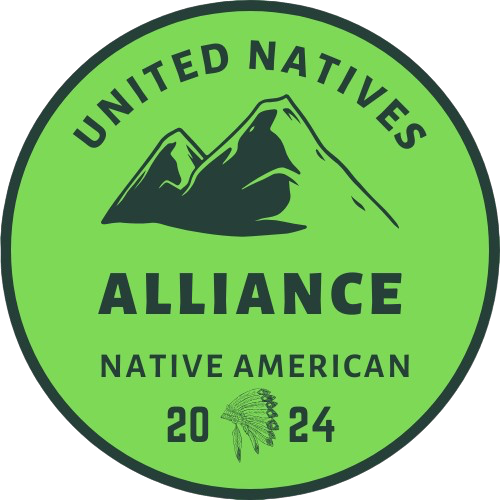How Native Americans Revolutionized Modern Medicine
Did you know that the common willow bark, used for thousands of years by Native healers, gave us aspirin? Not just a fun fact—it’s a testament to indigenous wisdom that shaped modern medicine in ways most of us never learned in school.
When we talk about medical breakthroughs in Native American medicine, we’re not discussing ancient history—we’re uncovering the foundation of treatments millions rely on daily.
From pain management to cancer research, Native American healing practices have revolutionized how we approach health today. Their holistic understanding of plants, minerals, and the human body provided solutions long before modern science caught up.
But here’s what’s truly mind-blowing: the most powerful Native American contributions to medicine aren’t the ones we’ve already discovered—they’re the ones we’re still learning about.
Native American Traditional Medicine: A Rich Historical Legacy

Ancient Healing Practices That Stood the Test of Time
Long before modern hospitals and pharmacies, Native Americans developed sophisticated healing systems that remain relevant today. These weren’t random remedies but carefully observed treatments refined over thousands of years.
The Navajo used sacred ceremonies like the “Blessing Way” to restore harmony, while Cherokee healers mastered the use of over 800 plant species for medicinal purposes. Willow bark? That was Nature’s aspirin, containing salicylic acid—the same compound in modern pain relievers.
What’s truly impressive is how these healers performed successful surgeries using obsidian blades sharper than modern surgical steel. The Incas even conducted brain surgeries with survival rates that would impress today’s neurosurgeons.
The Holistic Approach: Treating Body, Mind, and Spirit
Native American medicine never separated physical symptoms from emotional or spiritual well-being. Pretty revolutionary concept, right?
When someone fell ill, medicine people didn’t just treat the symptoms—they looked at the whole person. Imbalance in one area affected everything else. This three-dimensional approach to healing recognized connections modern medicine only “discovered” in the last few decades.
Healing ceremonies often involved the entire community because Native healers understood something fundamental: social connection heals. Science now confirms this with studies showing isolation increases mortality risk by 29%.
Knowledge Keepers: How Medical Wisdom Was Preserved and Passed Down
Native medical knowledge wasn’t written in textbooks but preserved through something equally powerful—oral tradition.
Young apprentices spent decades learning under established healers, memorizing hundreds of plant properties, preparation methods, and ceremonial protocols. The training was rigorous, combining hands-on practice with spiritual discipline.
In many tribes, medicine societies formed specialized groups that safeguarded healing knowledge. The Midewiwin Lodge of the Anishinaabe people functioned like a medical school, with different levels of expertise and specialized knowledge.
What’s remarkable is how this knowledge survived systematic attempts to eradicate Native cultures. Healing practices went underground during times of persecution, with knowledge keepers risking everything to maintain these traditions that benefit us all today.
Plant-Based Medicines and Their Modern Applications

Breakthrough Plant Remedies That Changed Western Medicine
The medicine cabinet in your home? It’s probably got at least a few products with roots in Native American healing traditions. Before pharmaceutical companies and clinical trials existed, indigenous healers had already discovered powerful plant medicines that would later revolutionize healthcare globally.
Take foxglove, for instance. Native healers used it for heart conditions long before scientists isolated digoxin from it. Today, derivatives of this compound save countless lives as treatments for congestive heart failure.
Or consider the humble yew tree. Indigenous peoples of the Pacific Northwest used parts of it medicinally for centuries. Scientists later discovered paclitaxel (Taxol) in its bark—now one of our most effective cancer-fighting drugs.
What’s wild is how many of these discoveries happened. Western scientists often dismissed indigenous knowledge until they saw results they couldn’t ignore.
Willow Bark to Aspirin: The Evolution of Pain Management
Got a headache? Thank Native Americans for that aspirin in your medicine cabinet.
Indigenous healers across North America used willow bark tea for pain relief, fever reduction, and inflammation for thousands of years. The bark contains salicin, which your body converts to salicylic acid—basically nature’s aspirin.
In 1897, Felix Hoffmann at Bayer created a synthetic version called acetylsalicylic acid. He didn’t discover the pain-relieving properties—he just made it easier on the stomach and patentable.
The timeline tells the real story:
| Time Period | Development |
|---|---|
| Pre-colonial era | Native healers using willow bark for pain |
| 1700s | European documentation of willow’s effects |
| 1828 | Salicin isolated from willow |
| 1897 | Aspirin synthesized and patented |
| Today | 40,000+ tons consumed annually worldwide |
Echinacea and Immune System Support
Ever popped echinacea when you felt a cold coming on? You’re following a tradition the Plains tribes established centuries ago.
Native Americans—particularly the Kiowa and Cheyenne—used echinacea for everything from coughs and sore throats to snake bites and wound healing. They chewed the roots, made teas, or created poultices from the whole plant.
Modern research has backed up what indigenous healers always knew—echinacea contains compounds that stimulate immune function. Studies show it can increase white blood cell counts and may reduce the duration of cold symptoms by up to 1.4 days.
Unlike many pharmaceuticals, echinacea doesn’t just target one symptom. It works with your body’s own defenses—a holistic approach that perfectly reflects the indigenous philosophy behind its original use.
Medicinal Plants Still Being Studied Today
The pharmaceutical treasure hunt in Native American plant medicine is far from over. Researchers are currently investigating dozens of traditional remedies that could hold solutions to modern health challenges.
Devil’s club, sacred to many Northwest tribes, contains compounds that show promise for diabetes management—potentially offering new options for a disease that disproportionately affects Native communities today.
Scientists are studying bearberry (uva ursi) for its antibacterial properties, particularly against antibiotic-resistant UTIs. The plant contains arbutin, which converts to hydroquinone in the body and fights infection.
Researchers at major universities are even exploring jimsonweed—used carefully by indigenous healers for pain and respiratory conditions—for compounds that might treat neurodegenerative diseases.
What’s often missing in these studies is proper credit and compensation. Many native communities are now working with researchers through benefit-sharing agreements to ensure their traditional knowledge is respected and rewarded when it leads to profitable discoveries.
Surgical and Medical Techniques Pioneered by Indigenous Healers

Advanced Surgical Procedures That Predated European Medicine
Long before Columbus set foot in the Americas, Native American healers were performing complex surgical procedures that European doctors wouldn’t attempt for centuries.
The Aztecs and Maya performed cranial surgeries with obsidian blades so sharp they cut with minimal tissue trauma. These indigenous surgeons had success rates that would make modern neurosurgeons nod in respect.
In what’s now Peru, Inca healers mastered trepanation—drilling holes in the skull to relieve pressure—with survival rates around 80%. Excavated skulls show bone regrowth, proving patients didn’t just survive but lived for years after.
The Lakota and other Plains tribes performed successful amputations using techniques that minimized blood loss, while healers among the Iroquois Confederacy developed methods for setting complex fractures that rivaled anything available in European hospitals of the time.
Wound Treatment and Infection Control Methods
Ever wonder how indigenous healers managed infections without antibiotics? They didn’t just manage—they excelled.
Cherokee healers created poultices using plants like goldenseal, which we now know contains berberine—a powerful antimicrobial compound. They’d apply these directly to wounds while keeping the injury site clean with regular washing.
The Comanche used honey—nature’s antibiotic—on battle wounds, while Navajo healers developed specialized techniques for wound drainage that prevented the spread of infection.
Many tribes used heated stones or boiling water to sterilize tools and materials—grasping the concept of germ theory centuries before Western medicine caught up.
Pain Management Techniques That Influenced Modern Anesthesia
Pain control without modern drugs? Native healers had it covered.
Willow bark tea—containing salicin, the precursor to aspirin—was widely used across tribes for pain relief. But they went way beyond basic pain management.
The Seminole used passionflower for its sedative properties during painful procedures. Apache healers administered carefully controlled doses of datura to induce unconsciousness during major surgeries—essentially creating a form of general anesthesia.
Pacific Northwest tribes developed pressure point techniques to block pain signals—methods that share principles with modern nerve blocks.
What’s truly remarkable is how these indigenous pain management systems considered both physical and psychological aspects of pain—an approach modern medicine is only now embracing through integrative pain management.
The Impact on Modern Pharmaceutical Research

Drug Discovery Based on Native American Botanical Knowledge
Native Americans weren’t just using plants for medicine – they were pharmaceutical pioneers centuries before we had labs with test tubes. Their deep understanding of medicinal plants has directly led to some of our most important modern drugs.
Take the Pacific yew tree. Native tribes along the Northwest coast used it for various ailments, and now we’ve extracted paclitaxel (Taxol) from it – one of our most effective cancer-fighting drugs. This isn’t some rare example. The rosy periwinkle, used by several tribes, gave us vincristine and vinblastine, crucial medications in treating childhood leukemia and Hodgkin’s disease.
What’s wild is how many prescription drugs today have roots in indigenous knowledge. Roughly 25% of our pharmaceuticals contain compounds first identified in plants used by Native healers.
Sustainable Harvesting Principles That Guide Today’s Research
The pharmaceutical industry is finally catching up to what Native Americans knew all along – you can’t just take and take from nature without giving back.
Indigenous practices like harvesting only what’s needed, taking just part of the plant to allow regrowth, and expressing gratitude for the plant’s sacrifice are now being incorporated into modern bioprospecting ethics.
Many research programs now follow the “Three Sisters” approach to sustainability:
- Only harvest plants that are abundant
- Take just enough for research needs
- Replant or restore habitats during collection
This shift isn’t just good karma – it’s smart science. Sustainable harvesting preserves genetic diversity and ensures these botanical resources will be available for future research.
Ethnobotanical Studies and Their Contribution to New Medications
Ethnobotany – the study of how cultures use plants – has become a goldmine for pharmaceutical researchers. Instead of testing random plants in the lab, scientists now partner with indigenous knowledge keepers to identify promising candidates.
This targeted approach has accelerated drug discovery dramatically. Plants like echinacea, goldenseal, and black cohosh – all staples in Native American medicine cabinets – are now being studied for potential new applications.
The numbers speak for themselves. Ethnobotanically-guided research is yielding positive results at nearly three times the rate of random screening methods. A plant used traditionally for pain management is far more likely to contain analgesic compounds than a randomly selected species.
Protecting Indigenous Intellectual Property in Medical Research
Here’s the uncomfortable truth: for centuries, Western medicine has taken indigenous knowledge without giving credit or compensation. That exploitation is finally being addressed.
Forward-thinking pharmaceutical companies now establish benefit-sharing agreements with tribal communities when developing medicines based on their traditional knowledge. These agreements ensure:
- Financial compensation for commercial products
- Recognition of intellectual contribution
- Community approval before research begins
- Access to resulting medications for the source community
The Convention on Biological Diversity and the Nagoya Protocol have created international frameworks for this protection, though implementation remains inconsistent. Some tribes have developed their own research protocols that outside scientists must follow.
This protection isn’t just about fairness – it encourages more knowledge sharing. When indigenous communities know their intellectual property will be respected, they’re more willing to collaborate with researchers, potentially unlocking even more medical breakthroughs.
Integrative Medicine: Blending Native Wisdom with Modern Science

Successful Case Studies of Integrated Approaches
The magic happens when we combine Native wisdom with modern tech. Take the Southcentral Foundation in Alaska – they’ve reduced ER visits by 40% through their “Nuka System of Care” which weaves Alaskan Native practices into conventional treatment. Patients don’t just get medical care; they connect with their cultural identity.
Or look at the Native American Health Center in Oakland. They’ve flipped the script on diabetes management by incorporating traditional foods and healing circles alongside standard monitoring. Their patients show better blood sugar control and fewer complications than those in conventional programs.
What’s working isn’t complicated – it’s about respect. These programs succeed because they treat the whole person, not just symptoms.
How Hospitals Are Incorporating Indigenous Healing Practices
Hospitals across the country are waking up to what Native healers have known forever. Mayo Clinic now offers healing lodge ceremonies for Native patients. Banner Health in Arizona has dedicated spaces for smudging rituals and talking circles.
This isn’t just window dressing. At Seattle Indian Health Board, traditional medicine practitioners work alongside doctors, reviewing cases together. They’ve got medicine men and women on staff – not as novelties, but as essential team members.
Even Johns Hopkins has introduced a Native American healing garden where patients can gather medicinal plants and connect with nature during recovery.
Mental Health Treatments Inspired by Native American Traditions
The mental health field is being transformed by Native American approaches. Trauma treatment centers are adopting talking circles that create community healing instead of isolated therapy sessions. These circles build connection – something our lonely society desperately needs.
Veterans Affairs hospitals report stunning results using sweat lodge ceremonies for PTSD. Many vets who didn’t respond to conventional therapy found relief through these ancient practices that honor warrior traditions.
The concept of “historical trauma” – understanding how past injustices affect present health – came from Native scholars and is now mainstream in psychology training.
The Future of Collaborative Medical Models
The next chapter looks even more promising. Medical schools like the University of Minnesota now require students to learn about indigenous healing frameworks. Pharmaceutical companies are partnering with tribal nations to study traditional plants while respecting intellectual property rights.
Insurance companies are starting to cover traditional healing practices – a game-changer for accessibility. Kaiser Permanente now reimburses for certain traditional healing sessions when referred by their doctors.
The NIH has established a whole division focused on integrative medicine research with Native American practices at the forefront.
This isn’t about replacing modern medicine – it’s about making it better. When we combine the precision of science with the holistic wisdom of Native traditions, everyone wins. The future of medicine isn’t either/or. It’s both.

The profound influence of Native American medical traditions on modern healthcare cannot be overstated. From the rich pharmacopeia of plant-based remedies that led to crucial medications, to sophisticated surgical techniques developed by indigenous healers, these contributions have shaped contemporary medicine in countless ways. Their holistic approach to wellness has inspired today’s integrative medicine practices, while their botanical knowledge continues to guide pharmaceutical research toward new treatments.
As we embrace the future of healthcare, acknowledging the invaluable contributions of Native American healing traditions honors this important legacy while opening doors to more comprehensive approaches to wellness. By respecting and incorporating indigenous medical wisdom, modern medicine can continue to evolve toward more effective, patient-centered care that treats not just symptoms but considers the whole person—body, mind, and spirit—just as Native healers have done for thousands of years.






https://shorturl.fm/KFtcm
https://shorturl.fm/Uk4wX